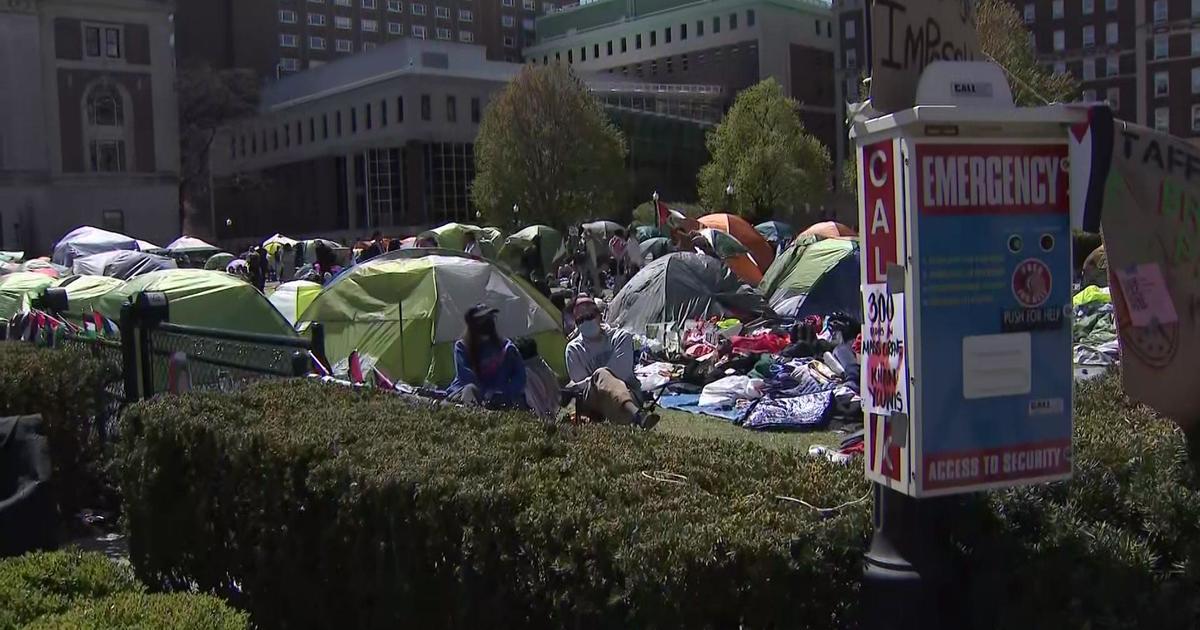Drones and robots could replace some field workers as farming goes high-tech
The fruits and vegetables you eat may soon be cultivated and processed by an army of drones and robots, some powered by artificial intelligence. In fact, it's already happening on farms across America.
Hylio, a Houston-based tech company, was granted an exemption from the Federal Aviation Administration in February for a single pilot to operate swarms of heavy drones over farms. Three battery-powered drones, some weighing as much as 400 pounds each, can now be used at one time to spray fertilizer and pesticides on fields of produce. That task is typically handled by farm workers or crop-dusting planes.
Before the FAA decision, deploying this kind of drone swarm would have required a team of licensed operators, which makes the process more complicated and expensive. Using a swarm of three drones at one time, one operator can spray 150 acres every hour.
"The exemption we got is precedent setting," said Hylio CEO Arthur Erickson. "[Our] customers and other companies can now cite it and receive the same permissions."
Drones, lasers and robotic "hands"
Crop-dusting drones were among the many high-tech agricultural tools on display at the February 2024 World Agriculture Expo in Tulare, in the heart of California's Central Valley.
More than 1,250 exhibitors appeared at this year's Expo, which drew more than 100,000 visitors. They observed demonstrations of products including an autonomous crop sprayer and an AI-powered robot that gently picked berries with a silicone "hand."
"Every farmer is going to be a coder someday," said Ethan Rublee, whose company farm-ng demonstrated an all-electric, robotic micro-tractor capable of using AI components that can be programmed to haul equipment, seed, cultivate and spread compost for hours on one charge. The product is called the Amiga.
Based in Watsonville, which is about an hour's drive from San Jose, Rublee's company has caught the eye of Silicon Valley investors.
"We've raised about $16 million total and we've been in operation for four years," he said. "[We have} $10 million in the bank and a team of 30 people, just an amazing an amazing collection of people that are basically moving to Watsonville to figure out how to re-invent agriculture."
Paul Mikesell, CEO and founder of Carbon Robotics, showed off his company's Laser Weeder, which uses powerful infrared lasers and high-speed cameras to identify and blast weeds to oblivion in a matter of seconds.
"Before you had a Laser Weeder, you had to have people out in the field with hand tools, spraying chemicals," said Mikesell.
Could this be a solution for the labor shortage?
Developers of these high-tech tools said their inventions could help ease the decadeslong labor shortage that's been impacting the U.S. agricultural industry. Between 1950 and 2000, the number of hired farm laborers declined by more than 50%, according to data from the U.S. Department of Agriculture. Hiring has continued to be a challenge for farm owners into the 2020s.
While the shift towards automation could offset the labor shortage and relieve farm workers of some arduous, monotonous and at times dangerous tasks, 61-year-old farm worker Lulu Cardenas fears this new technology will put her job at risk.
"I feel replaced by something like that," said Cardenas. "I'm going to have a hardship to help my family."
She has worked the fields in California's Central Valley since immigrating from Mexico 20 years ago. When CBS News described the new kinds of farm robots to Cardenas, she was disappointed, citing the spiritual connection between humans and plants.
"You cannot replace human heat with a cold machine," she said.
Cardenas' friend Asuncion Ponce, who came from her same village just south of Mexico City 36 years ago, was also upset when he saw images of the new farm robots.
"The farmers benefit from it, but they're taking a lot of work from us," said Ponce, who just became a U.S. citizen.
He has already seen equipment take over some work on the farm, but this was his first time seeing the new crop of "thinking" machines.
"There's a lot of machinery that [now harvests] onion, garlic, lettuce, broccoli," Ponce said. "Instead of more people laboring, now you're having three people."
Some large-scale farms and advocacy groups have introduced training programs to help farm workers develop the skills to adapt to the new technology and take on new roles as drone operators or programmers.
"I think that we can use machinery and still take care of our people," said Adrián Miramontes, a Mexican immigrant and military veteran who now manages a large farming operation. "They're willing to learn and they're willing to do better for themselves and their families."
The next steps
The U.S. Department of Labor is also monitoring the issue. A spokesperson told CBS News that next month the department will send President Biden a list of recommendations for an aid program that could help farm workers who have been displaced by AI. Any new aid package would require congressional approval. It could also be folded into a new Executive Order that would follow one from October 2023.
It's unclear whether such an aid program would benefit the hundreds of thousands of undocumented immigrants who work on American farms.



